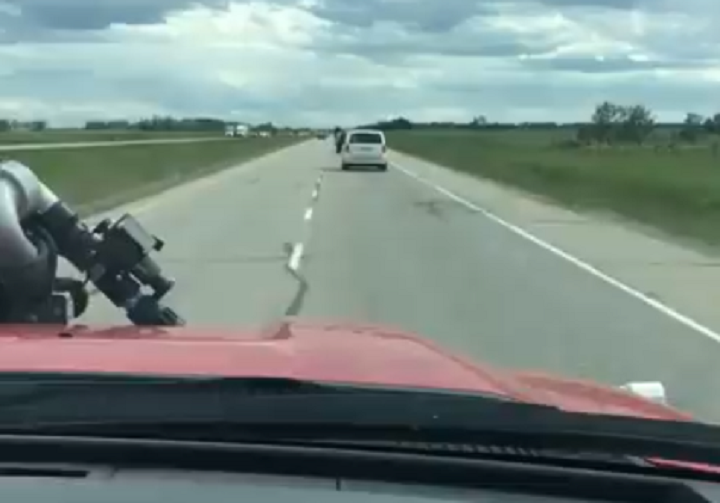After encountering several drivers who didn’t pull to the side to let their fire trucks pass on Alberta’s busy Queen Elizabeth II Highway, a member of the Millet Fire Department took to social media on Wednesday to vent his frustrations.

Cpt. Trevor Palmer was in the front seat of one of the department’s pick-up trucks on route to an outside fire call, when he started recording vehicles on the QEII not slowing down and pulling over for the emergency vehicles.
“So here you can see, we’re at full highway speed, lights and sirens, and we can barely keep up with traffic on the QEII Highway,” Palmer says in the video that shows the fire department’s truck in the left lane while a line of vehicles continues at full speed in the right lane.
He shared it on the department’s Facebook page where it was shared over 600 times in less than 15 hours.
“I’ll be the first one to admit that that particular video doesn’t demonstrate the best what we deal with daily,” Palmer said. “If we had dashcams, we could show multiple, multiple instances where this happens; and it happens all the time.”
According to Alberta’s Traffic Safety Act, a driver who has an emergency services vehicle come up behind them – with lights and sirens on – must yield the right of way and come to a complete stop. If the driver is on a two-lane highway, that means pulling to the right shoulder and stopping.

Get daily National news
If the driver is on a highway that has four or more lanes, the driver must pull to the shoulder adjacent to the lane they’re driving in. If the driver is in the left lane, that means pulling to the left shoulder.
“It’s just much safer for us and the motoring public if we’re given a clear lane of travel,” RCMP spokesperson Cpl. Laurel Scott said. “When a vehicle stops, that allows us to be sure of what they’re doing.”
Palmer would be happy if people would just move over and slow down just a little.
“Is it really that big of a deal to take 20 or 30 seconds of your day and move off to the side a little bit?” he said. “Please recognize that we’re there, pull off to the right a little bit if you can and let us get where we need to go.”
According to Palmer, vehicles not pulling over for emergency crews not only creates a traffic issue, it affects crews’ abilities to focus and prepare to do their jobs. If a vehicle were to suddenly pull out in front of one of the department’s larger trucks, Palmer said the collision could be “potentially catastrophic.”
“If we had to take evasive maneuvers to avoid a collision, we could potentially put our own crews at risk or, worse yet, we could pretty much run over some of the small cars that are on the highway today. That terrifies us. That is a real concern for our fire department.”
Both Palmer and Scott also want to remind drivers that they must remain stopped until all the emergency vehicles have passed.
Palmer isn’t sure whether drivers can’t hear the sirens or see the lights, but said it’s quite apparent that people aren’t shoulder checking as vehicles often pull right in front of the fire crews. He also says it’s pretty clear drivers are trying to stay ahead of the fire trucks so they don’t get stuck behind a possible closure.
“We’re not trying to hold people up. We don’t like closing highways down, we don’t like slowing people down, but at the end of the day we have a job to do.
“We want to get where we’re going safely, and of course quickly, but we want to be able to do it without feeling like we’re the bad guy.”
In cases where traffic has already stopped before emergency crews get there, Palmer said they’ll go right down the middle of the two lanes and asks drivers to pull over to the side of the road before coming to a complete stop.
He said those minutes and seconds that their trucks get delayed could be the difference between getting to a scene in time to save someone, and having that person die because crews are stuck behind people who don’t want to wait.
Not yielding to emergency crews carries a fine of $233 in Alberta.












Comments